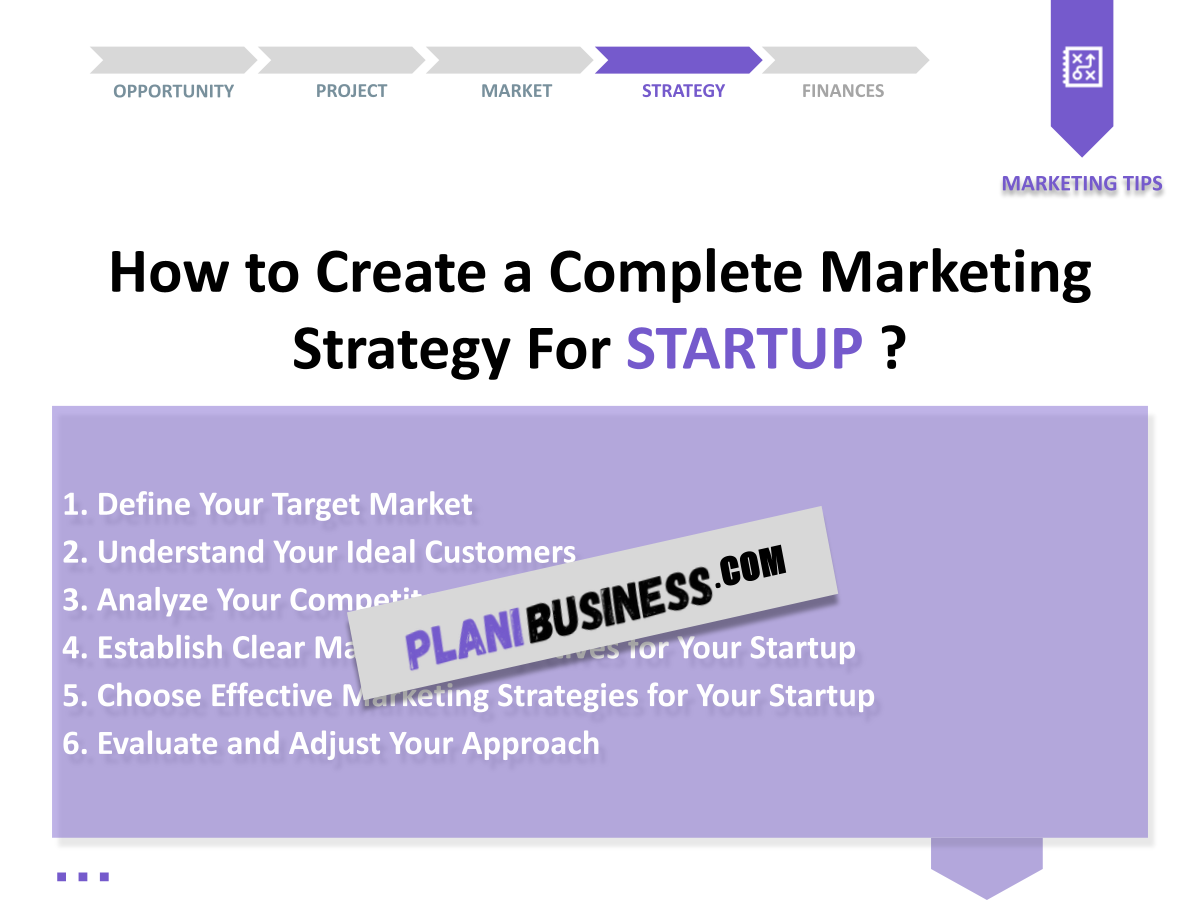Are you thinking about starting a startup business? You’re not alone! Did you know that nearly 90% of startups fail, often due to poor marketing strategies? Crafting a solid Startup Marketing Plan is essential for your venture’s success. In simple terms, a Startup Marketing Plan outlines how your business will attract and retain customers while achieving your growth objectives.
Identifying your target market is crucial as it guides your marketing efforts. By knowing who you are marketing to, you can tailor your strategies effectively. Let’s dive into the first part of building your Startup Marketing Plan.
1. Define Your Target Market
| Market Segment | Characteristics | Example |
|---|---|---|
| Demographics | Age, gender, income level | Millennials, ages 25-35 |
| Geographics | Location, urban vs rural | Urban centers in the U.S. |
Your target market is the group of people who are most likely to buy your product or service. To define this market, consider both demographic and geographic factors. For instance, if you’re launching a tech gadget, your primary audience might be young adults living in urban areas who are tech-savvy. Understanding these characteristics helps you create marketing messages that resonate.
- Research Demographics: Use surveys and online tools to gather data.
- Analyze Trends: Look at industry reports to understand market shifts.
- Segment Your Audience: Divide your market into subgroups for targeted strategies.
2. Understand Your Ideal Customers
| Customer Persona | Needs | Pain Points |
|---|---|---|
| Tech-Savvy User | Latest tech gadgets | Overwhelmed by choices |
| Budget-Conscious Shopper | Affordable options | Fear of low quality |
Your ideal customers are the individuals who will benefit the most from your offerings. Understanding their needs and pain points helps you connect better. For example, a tech-savvy user may desire the latest gadgets but feel overwhelmed by the choices available. By addressing their concerns in your marketing, you can build trust and encourage purchases.
Here’s how you can create effective customer personas:
- Identify Key Characteristics: Age, gender, and lifestyle preferences.
- Gather Insights: Conduct interviews or focus groups to understand their needs.
- Document Your Personas: Create detailed profiles to guide your marketing efforts.
By knowing who your ideal customers are, you can craft messages that speak directly to them, making your marketing more effective.
3. Analyze Your Competitors
| Competitor | Strengths | Weaknesses |
|---|---|---|
| Competitor A | Strong brand presence | High pricing |
| Competitor B | Wide product range | Poor customer service |
Analyzing your competitors can reveal gaps in the market that you can exploit. It helps you differentiate your startup and find your unique selling proposition. For instance, if Competitor A has a strong brand but high prices, you might focus on offering quality at a more affordable rate.
Here’s how to conduct a competitor analysis:
- Identify Key Competitors: List out businesses that offer similar products or services.
- Evaluate Their Strengths: Look at their marketing strategies, customer reviews, and market share.
- Spot Weaknesses: Identify areas where they fall short, such as customer service or product quality.
- Differentiate Yourself: Use this information to carve out your niche in the market.
Understanding your competitors is not just about imitation; it’s about innovation. Leverage their weaknesses to position your startup as a better alternative.
4. Establish Clear Marketing Objectives for Your Startup
| Objective | Measurement | Timeline |
|---|---|---|
| Increase website traffic | 20% increase | 3 months |
| Grow social media following | 500 new followers | 1 month |
Clear marketing objectives give you something to aim for. They should be SMART: Specific, Measurable, Achievable, Relevant, and Time-bound. For example, instead of saying “I want to increase website traffic,” specify “I want to achieve a 20% increase in website traffic over the next three months.”
Here are some examples of effective marketing objectives:
- Increase Sales: Aim for a specific percentage increase in sales within a defined period.
- Expand Market Reach: Target new demographics or geographic areas to broaden your audience.
- Enhance Customer Engagement: Improve your social media interactions and customer feedback responses.
Establishing these objectives not only gives your team direction but also helps you measure success as you implement your Startup Marketing Plan. Remember, it’s crucial to revisit and adjust these objectives as needed based on market feedback and performance metrics.
5. Choose Effective Marketing Strategies for Your Startup
| Strategy | Target Audience | Expected Outcome |
|---|---|---|
| Social Media Marketing | Young adults | Increased engagement |
| Email Marketing | Existing customers | Higher retention rates |
Your marketing strategies should align with your objectives and resonate with your target audience. Consider both digital and traditional marketing channels. For instance, if your target audience is young adults, leveraging platforms like Instagram and TikTok can be highly effective.
Here are some popular marketing strategies to consider:
- Content Marketing: Create valuable content that addresses your audience’s needs, such as blogs, videos, or infographics.
- Search Engine Optimization (SEO): Optimize your website to rank higher in search engine results, driving organic traffic.
- Pay-Per-Click Advertising: Use targeted ads to reach potential customers directly, paying only when they click on your ad.
- Influencer Partnerships: Collaborate with influencers in your industry to reach a broader audience through their established credibility.
Choosing the right strategies is crucial to the success of your Startup Marketing Plan. Each strategy should be tailored to your specific goals and audience to maximize effectiveness.
6. Evaluate and Adjust Your Approach
| Evaluation Method | Frequency | Actions |
|---|---|---|
| Website Analytics | Monthly | Optimize content |
| Customer Feedback | Quarterly | Adjust offerings |
Regular evaluation of your marketing efforts is essential. It helps you identify what’s working and what needs tweaking to stay on track. For example, if website analytics show high bounce rates, it might indicate that your landing pages need optimization.
Here’s how to effectively evaluate your marketing strategy:
- Set Key Performance Indicators (KPIs): Define measurable metrics that align with your objectives.
- Conduct Regular Reviews: Schedule monthly or quarterly reviews to assess progress against your KPIs.
- Gather Customer Feedback: Use surveys or interviews to gain insights into customer satisfaction and areas for improvement.
- Adjust Strategies as Necessary: Be flexible and willing to pivot your approach based on performance data and feedback.
By continuously evaluating and adjusting your approach, you ensure that your Startup Marketing Plan remains relevant and effective in achieving your business goals.
7. Example N°1 of Marketing Plan for a Tech Startup
| Steps | Actions | Details |
|---|---|---|
| Target Market | Identify tech enthusiasts | Focus on urban areas |
| Ideal Customers | Create customer personas | Tech-savvy individuals |
| Competitors | Conduct SWOT analysis | Identify gaps |
| Marketing Objectives | Increase brand awareness | Social media campaigns |
| Marketing Strategies | Leverage influencers | Partner with tech bloggers |
| Evaluation | Monitor engagement | Adjust strategies as needed |
This marketing plan for a tech startup focuses on attracting tech enthusiasts by identifying urban areas where these individuals are concentrated. The plan emphasizes creating detailed customer personas to understand the target audience better. By conducting a SWOT analysis, the startup can identify its strengths and weaknesses compared to competitors.
To increase brand awareness, the startup will launch social media campaigns and collaborate with influencers in the tech space. Monitoring engagement will help refine strategies and ensure the marketing efforts align with the startup’s objectives.
8. Example N°2 of Marketing Plan for a Health Startup
| Steps | Actions | Details |
|---|---|---|
| Target Market | Focus on health-conscious individuals | People aged 30-50 |
| Ideal Customers | Develop personas | Fitness enthusiasts |
| Competitors | Benchmark against leading brands | Identify unique offerings |
| Marketing Objectives | Boost online sales | Targeted ads |
| Marketing Strategies | Content marketing | Blog posts and videos |
| Evaluation | Analyze sales data | Refine marketing tactics |
This marketing plan for a health startup targets health-conscious individuals, particularly those aged 30-50 who are passionate about fitness. The startup will develop customer personas to tailor its messaging effectively.
By benchmarking against leading brands, the startup can identify unique offerings that set it apart in the competitive landscape. The primary marketing objective is to boost online sales through targeted advertising and engaging content marketing, including blog posts and videos focused on health topics.
Regular analysis of sales data will allow the startup to refine its marketing tactics, ensuring that they resonate with the target audience and drive conversions.
9. Example N°3 of Marketing Plan for a Food Startup
| Steps | Actions | Details |
|---|---|---|
| Target Market | Identify food lovers | Local communities |
| Ideal Customers | Create detailed profiles | Health-conscious eaters |
| Competitors | Perform competitive analysis | Identify pricing strategies |
| Marketing Objectives | Increase customer base | Promotional offers |
| Marketing Strategies | Host tasting events | Engage community |
| Evaluation | Gather feedback | Adjust menu based on preferences |
This marketing plan for a food startup focuses on attracting food lovers in local communities. The startup identifies its target market and creates detailed profiles of its ideal customers, specifically health-conscious eaters who prioritize nutritious options.
To understand the competitive landscape, the startup will perform a competitive analysis to identify pricing strategies and gaps in the offerings. The primary marketing objective is to increase the customer base through promotional offers and engaging community initiatives.
One effective strategy is to host tasting events that allow potential customers to sample products and engage with the brand. Gathering feedback from these events will help the startup adjust its menu based on customer preferences, ensuring that it meets the market demand.
10. Example N°4 of Marketing Plan for a Fashion Startup
| Steps | Actions | Details |
|---|---|---|
| Target Market | Target fashion-forward individuals | Young adults and teens |
| Ideal Customers | Develop personas based on trends | Style-conscious shoppers |
| Competitors | Research top brands | Identify market positioning |
| Marketing Objectives | Increase online presence | Social media growth |
| Marketing Strategies | Collaborate with influencers | Leverage social media |
| Evaluation | Track social media metrics | Refine targeting strategies |
This marketing plan for a fashion startup is designed to attract fashion-forward individuals, particularly young adults and teens. The startup will develop customer personas that reflect current trends, ensuring that its messaging resonates with style-conscious shoppers.
By researching top brands, the startup can identify its market positioning and differentiate itself from competitors. The main marketing objective is to increase the online presence, primarily through social media growth.
To achieve this, the startup will collaborate with influencers who align with its brand values and aesthetics. Tracking social media metrics will be crucial for evaluating the effectiveness of these strategies, allowing the startup to refine its targeting as needed to maximize engagement and conversions.
11. Example N°5 of Marketing Plan for a Tech Startup
| Steps | Actions | Details |
|---|---|---|
| Target Market | Identify tech enthusiasts | Focus on urban areas |
| Ideal Customers | Create customer personas | Tech-savvy individuals |
| Competitors | Conduct SWOT analysis | Identify gaps |
| Marketing Objectives | Increase brand awareness | Social media campaigns |
| Marketing Strategies | Leverage influencers | Partner with tech bloggers |
| Evaluation | Monitor engagement | Adjust strategies as needed |
This marketing plan for a tech startup focuses on attracting tech enthusiasts by identifying urban areas where these individuals are concentrated. The plan emphasizes creating detailed customer personas to understand the target audience better. By conducting a SWOT analysis, the startup can identify its strengths and weaknesses compared to competitors.
To increase brand awareness, the startup will launch social media campaigns and collaborate with influencers in the tech space. Monitoring engagement will help refine strategies and ensure the marketing efforts align with the startup’s objectives.
12. Example N°6 of Marketing Plan for a Service Startup
| Steps | Actions | Details |
|---|---|---|
| Target Market | Identify service seekers | Local community focus |
| Ideal Customers | Create profiles based on needs | Busy professionals |
| Competitors | Research local competitors | Identify service gaps |
| Marketing Objectives | Build a loyal customer base | Referral programs |
| Marketing Strategies | Offer free consultations | Engage potential clients |
| Evaluation | Gather client feedback | Refine service offerings |
This marketing plan for a service startup aims to attract service seekers within the local community. The startup will identify its target market and create profiles based on the needs of busy professionals who value convenience and efficiency.
Researching local competitors will help the startup identify gaps in service offerings, allowing it to position itself effectively. The primary marketing objective is to build a loyal customer base through referral programs that encourage word-of-mouth marketing.
One effective strategy is to offer free consultations, which can engage potential clients and showcase the value of the services offered. Gathering client feedback will be crucial for refining service offerings and ensuring they meet customer expectations.
13. Example N°7 of Marketing Plan for a Travel Startup
| Steps | Actions | Details |
|---|---|---|
| Target Market | Focus on adventure seekers | Young adults and families |
| Ideal Customers | Develop personas | Budget travelers |
| Competitors | Conduct competitive analysis | Identify unique offerings |
| Marketing Objectives | Increase bookings | Promotional packages |
| Marketing Strategies | Use email marketing | Target past customers |
| Evaluation | Analyze booking trends | Adjust marketing efforts accordingly |
This marketing plan for a travel startup targets adventure seekers, particularly young adults and families looking for budget-friendly travel options. The startup will develop personas to understand its ideal customers better and tailor its offerings accordingly.
Conducting a competitive analysis will help the startup identify unique offerings that differentiate it from competitors. The primary marketing objective is to increase bookings through promotional packages that appeal to budget travelers.
Utilizing email marketing to reach past customers can help drive repeat business. Analyzing booking trends will be crucial for adjusting marketing efforts to ensure they resonate with the target audience and maximize conversions.
Conclusion
In conclusion, creating a comprehensive Startup Marketing Plan is crucial for the success of your venture. By understanding your target market, ideal customers, competitors, and setting clear marketing objectives, you can effectively position your startup for growth. Remember, a well-structured marketing strategy is the backbone of your startup’s journey.
If you’re looking for a solid foundation to build upon, consider checking out this business plan template for startups. Additionally, you might find our articles on How to Initiate a Startup? and How to Create a SWOT Analysis for Startups? helpful in your entrepreneurial journey. Start building your future today!
FAQ
1. What is a Startup Marketing Plan?
A Startup Marketing Plan is a strategic document that outlines how a startup will attract and retain customers while achieving its business goals.
2. Why is a Marketing Plan important for startups?
A marketing plan helps startups define their target market, set clear objectives, and choose effective strategies, ensuring that they can compete in the marketplace.
3. How do I identify my target market?
Identify your target market by researching demographics, psychographics, and purchasing behavior. Use surveys and market analysis tools for better insights.
4. What are some effective marketing strategies for startups?
Effective strategies include content marketing, social media marketing, email campaigns, influencer partnerships, and SEO tactics.
5. How can I measure the success of my marketing efforts?
Measure success through key performance indicators (KPIs) such as website traffic, conversion rates, social media engagement, and customer feedback.
6. What is the difference between a marketing plan and a business plan?
A business plan outlines the overall strategy and vision for the business, while a marketing plan specifically focuses on how to market the products or services.
7. How often should I update my marketing plan?
It’s recommended to review and update your marketing plan at least quarterly or whenever there are significant changes in the market or business strategy.
8. What is a customer persona?
A customer persona is a detailed representation of your ideal customer based on market research and real data about existing customers.
9. How do I conduct a competitive analysis?
Conduct a competitive analysis by identifying your competitors, analyzing their strengths and weaknesses, and comparing their offerings with yours.
10. Can I create a marketing plan without prior experience?
Yes, you can create a marketing plan without prior experience by using templates, resources, and seeking guidance from marketing professionals or online courses.







